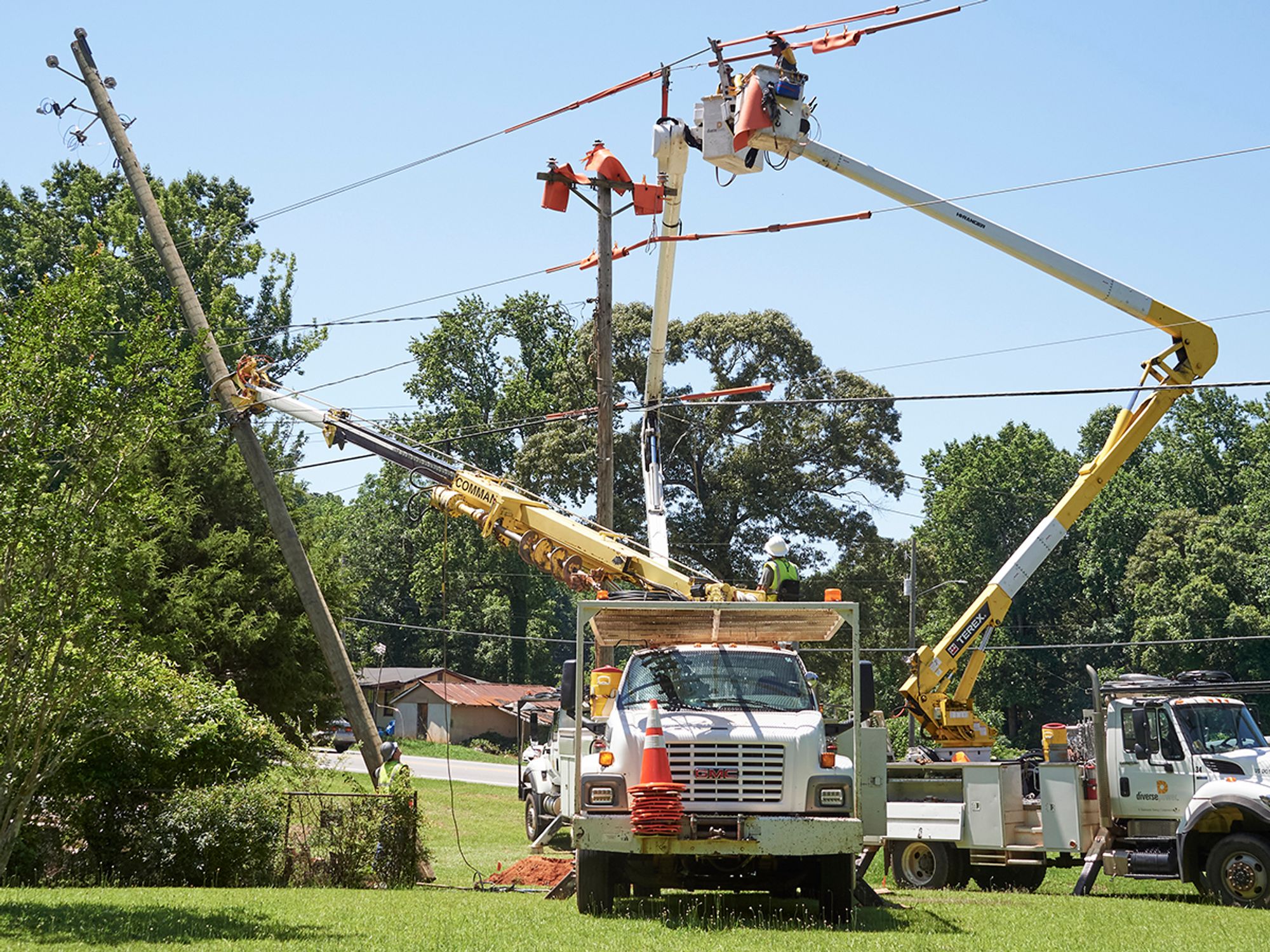Common grounding procedures

- Work being done near transmitter towers or power lines must have precautionary measures in place for dissipating voltage.
- Employees who are attaching grounds are at risk of shock and should have adequate protection.
A common method of grounding, which the Occupational Safety & Health Association (OSHA) recommends in 1926 Subpart O — Motorized Vehicles, Mechanical Equipment, and Marine Operations for work near an electrical charge, includes:
- Providing the equipment with an electrical ground directly to the upper rotating structure supporting the boom; and
- Attaching ground jumper cables to materials being handled by boom equipment when electrical charge is induced while working near energized transmitters. Crews must be provided with nonconductive poles having large alligator clips or other similar protection to attach the ground cable to the load.
It’s important to understand that work being performed near transmitter towers or power lines (where an electrical charge can be induced in the equipment or materials being handled) must have precautionary measures implemented to dissipate induced voltages before work is performed. Being aware of the limitations of grounding is key.
Limitations of grounding
According to the preamble to Subpart CC (page 47958 of the Federal Register dated August 9, 2010), “OSHA is aware that employees are exposed to serious electric shock hazards when they are attaching grounds in accordance with 1926.1408(f). For example, when attaching the rigging to the load or the ground to the crane, the crane and load will be energized.
“OSHA views this condition as a recognized hazard and expects employers to ensure that employees are adequately protected when they are attaching grounds. Employers who fail to properly protect their employees in this regard will, in appropriate circumstances, be subject to citation under the General Duty Clause (sec. 5(a)(1)) of the OSH Act.”
Recommended evacuation procedures
Deciding whether to remain inside the cab or evacuate after power-line contact is important, especially where there is an imminent danger of fire, explosion, or other emergency. According to OSHA, to protect crane operators against electrical shock, the following procedures are recommended:
- The crane operator should remain inside the cab until the lines have been de-energized.
- All other personnel should keep away from the crane, ropes, and load since the ground around the machine might be energized.
- The crane operator should try to remove the crane from contact by reversing direction.
- If the crane cannot be moved away from contact, the operator should remain inside the cab until the lines have been de-energized.
